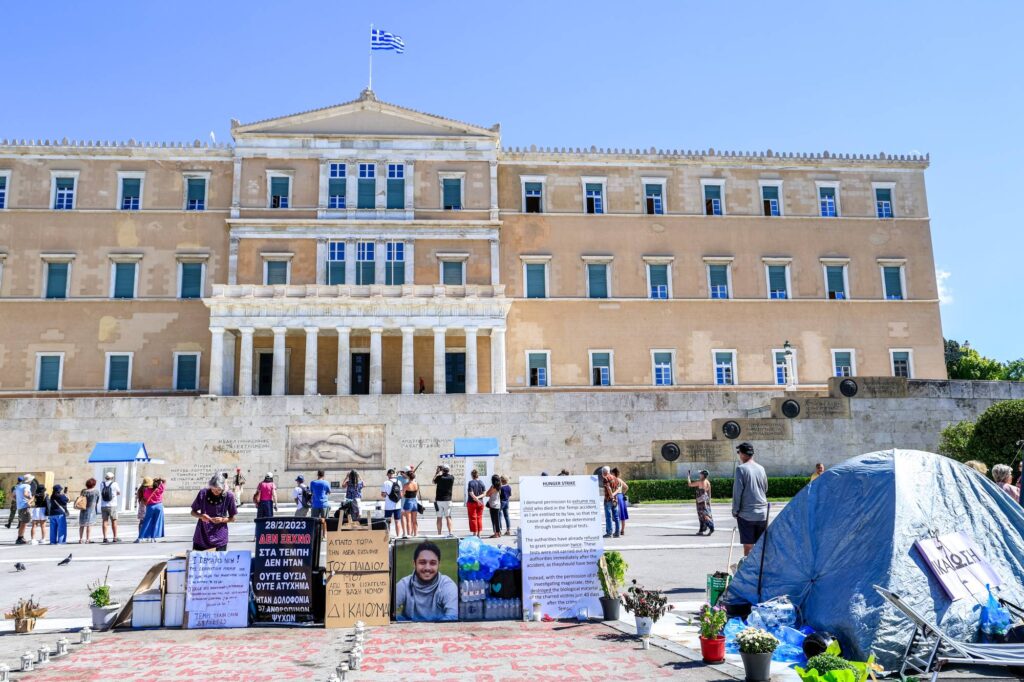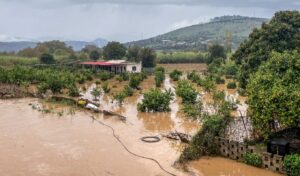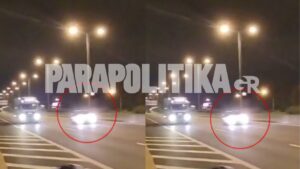Regarding the exhumation request by relatives of victims from the Tempe rail tragedy and the Supreme Court’s decision, criminal law expert and former vice-president of the Bar Association, Theodoros Mantas spoke on “Parapolitika 90.1” and the show “Se Proto Plano” with Alexandros Klossa. Specifically, when asked if anyone can request the exhumation of a deceased person, the criminal lawyer’s answer is clear: “No. Let’s start with that. There is a legislative regulation. The truth is that we have a journey of years behind us in depth of time. All these are regulated. Understand that it’s a presidential decree from 1975, 50 whole years ago. Whatever has been updated is through decisions and not through legislative interventions.”
Meanwhile, he discusses a minimum safety time limit. “There is a minimum limit which is three years from burial within which it cannot (be exhumed). Not even the closest relatives of the deceased can, of their own will, with their own desire, proceed with exhumation and transfer. It’s not only exhumation for a specific purpose. It can be a transfer. Let’s say from Athens to ancestral lands, to the region where the deceased originated from. So we have the safety valve of three years,” he states characteristically.
“Just and lawful request” by Tempe victims’ parents for exhumation
To overcome this time limit for exhumation, Mr. Mantas clarifies: “Now during this time period, that is before three years from burial are completed, the possibility of exhumation exists only with an order issued by the competent prosecutor of first instance.” As for the case of the Tempe victims’ relatives’ request, the criminal lawyer estimates: “In the present case (of Tempe), the competence lies with the Larissa prosecutor’s office. Here we have a very specific request. It’s not vaguely about exhumation. The request is very specific, something which is actually rare, to tell the truth. It is requested that exhumation be carried out in order to conduct DNA testing on the remains, on the bones that have been buried. To determine whether the body of the deceased located at the specific burial site is his own. Whether it is identified. Whether there are possibly bones that were handed over to the parents. This is the famous story of the mix-up and its adverse consequences, where there really is suspicion among some parents, possibly convinced that the remains handed over for burial by relatives – either partially or in their entirety – may not be their own children.”
And he estimates: “I think this view, this request is both lawful and just in the way it is formulated.” Regarding the involvement of the Supreme Court, which declares itself incompetent, Mr. Mantas emphasizes that “we must be very careful. And not case by case. That is, what the political leadership of the Ministry of Justice unfortunately tends to do in recent times – to intervene à la carte in matters that are developing in public life and moving in the field of justice – should not drag us into the same mistake.” The criminal lawyer explains that “today the case file is in the hands of the President of the Larissa Court of Appeals and therefore, according to the relevant provisions of the Code of Criminal Procedure, the only one who has the authority to order exhumation, if he judges that such a thing is well-founded and appropriate, is the President of the Court of Appeals to return the case file for supplementary investigative actions.”
When the journalist pointed out that during the previous period when the case had not been closed, the Supreme Court could intervene and request exhumation, Mr. Mantas emphasized: “In my opinion, in all the previous ones, because we saw interventions and public positions by the Supreme Court directly connected with the tragic Tempe case and the loss of 57 lives, it did not show such patterns. On the contrary, we had both advice and encouragements in specific directions. Here we have a differentiation and in reality, I state my opinion in a way that does not allow misinterpretation. We hide behind procedural regulations, which are interpreted or misinterpreted case by case, in order to shift responsibility. I should note the press release announcement from the Supreme Court prosecutor’s office. And here we keep distance. And here the precedent of the announcement itself keeps distance. It says that it really ‘received a request in the void with which they submit the specific request to me.’ It repeats the competence and speaks clearly about the Larissa Court of Appeals Prosecutor’s Office, President of Larissa Court of Appeals and the text concludes very carefully that in any case, the request from relatives that has been communicated to me does not include a clear and independent exhumation request. […] It keeps, maintains the safety distance in the sense of strict procedural interpretation. Understandable. But do you know what the complaint is? […] The complaint is one and unique. When we have such a huge issue, when we have a hunger striker, whose life is beginning to hang by a thread and who lost his own child in the tragic Tempe accident, neither the state nor justice has the luxury, does not have the margin, with interpretations, I repeat, or misinterpretations of procedural provisions – no one has the right to throw the ball into the stands and avoid giving a solution in another more effective direction. This is the complaint and it is absolutely justified.”




